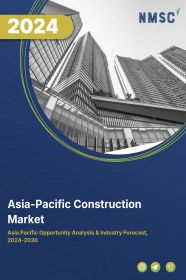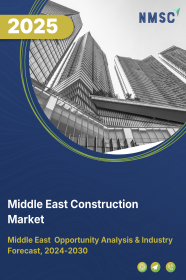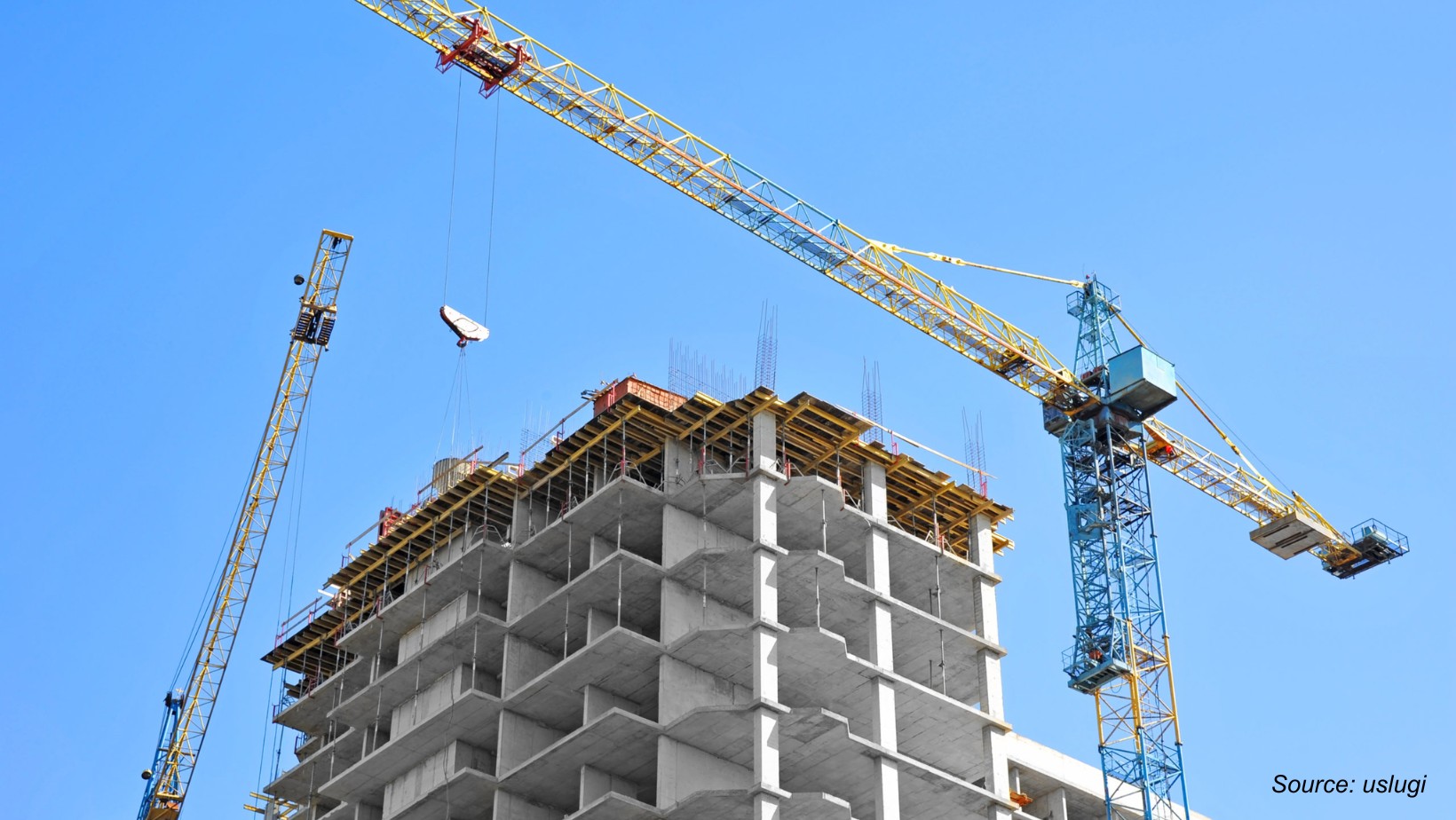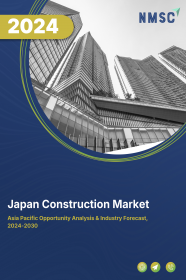
Japan Construction Market by Type (Renovation, and New Construction), by Sector (Real Estate and Others), by Construction Method (Traditional Construction, Prefabricated/Modular Construction, 3D Printed Construction, Green/Sustainable Construction), and by Type of Contractor (Large Contractor, Medium Contractor and Small Contractor) – Country Industry Trends and Forecast, 2025–2030
Industry: Construction & Manufacturing | Publish Date: 01-Jul-2025 | No of Pages: 153 | No. of Tables: 117 | No. of Figures: 62 | Format: PDF | Report Code : CM2217
Japan Construction Industry Overview
The Japan Construction Market size was valued at USD 480.21 billion in 2024, and is projected to grow to USD 504.33 billion by 2025. Additionally, the industry is expected to continue its growth trajectory, reaching USD 571.43 billion by 2030, with a CAGR of 2.5% from 2025 to 2030.
The Japan construction market is experiencing substantial growth, driven by an increase in large-scale development projects and rising investments across key infrastructure sectors. These developments underscore the industry's pivotal role in supporting national economic progress.
At the same time, the market is undergoing a digital transformation, with the adoption of Building Information Modeling (BIM) and other advanced technologies enhancing project efficiency, collaboration, and lifecycle management.
Despite these positive trends, regulatory complexities continue to pose challenges by prolonging project timelines and increasing costs, yet the momentum toward modernization and digital integration signals strong potential for sustained expansion.
Surge in Large-Scale Projects Fuels Japan's Construction Market Growth
Japan's construction industry is experiencing significant expansion, driven by a surge in large-scale projects. In 2023, several notable megaprojects commenced, including the Higashigotanda Two Chome Third District Type One Urban Redevelopment, GLP Yachiyo V, Tenjin Business Center Phase 2 Project, Suzaka Refrigerated Showcase Manufacturing Factory, and Kitanakadori North District B-1 District New Construction. These initiatives underscore the sector's pivotal role in Japan's economic development, highlighting its essential contribution to the nation's progress.
The momentum continues into 2024, with several major projects underway. The Torch Tower in Tokyo, set to be Japan's tallest skyscraper upon completion in 2028, exemplifies the scale and ambition of current developments. Additionally, the Grand Green Osaka project, a 24-hectare civic development near Osaka Station, opened in September 2024, enhancing urban green spaces and infrastructure. These projects not only contribute to economic growth but also reflect Japan's commitment to sustainable urban development.
Infrastructure Investment Fuels Japan’s Construction Market Growth
Japan's construction industry is experiencing robust expansion, driven by substantial investments in infrastructure development. In fiscal year 2023, public construction investment in Japan was estimated at approximately ¥25.3 trillion (USD 190 billion), marking a notable increase from the previous year. This upward trend continued into 2024, with both public and private sector investments projected to rise, reflecting a strong commitment to enhancing the nation's infrastructure.
Looking ahead, the construction market is poised for sustained growth. The government's focus on modernizing aging infrastructure, coupled with initiatives to boost renewable energy capacity and support the semiconductor industry, is expected to drive demand across various sectors. Investments in high-speed rail, energy-efficient buildings, and smart city projects are central to Japan's long-term development strategy, positioning the construction industry as a key contributor to the nation's economic and technological advancement.
Regulatory Complexities Hindering Japan's Infrastructure Market Growth
Japan's construction industry faces significant challenges due to the intricate web of regulations governing infrastructure projects. These projects require compliance with numerous permits and approvals at local, regional, and national levels, encompassing zoning laws, environmental assessments, building codes, and safety standards. The complexity and length of these approval processes often lead to delays and increased costs, as developers navigate through bureaucratic inefficiencies and regulatory disparities across different jurisdictions. Such complexities can disrupt project timelines and deter potential investments, as stakeholders seek more streamlined and predictable regulatory environments.
The Japanese government recognizes these challenges and is exploring measures to simplify and expedite the permitting process. Proposed reforms include extending project durations, relaxing certain regulations, providing long-term power contracts, and offering tax incentives to enhance project profitability. These initiatives aim to create a more conducive environment for infrastructure development, balancing the need for regulatory oversight with the necessity for timely and cost-effective project execution. However, the success of these reforms will depend on effective implementation and collaboration between governmental bodies and the construction industry.
Digitalization and BIM Propel Japan’s Construction Market Expansion
Japan's construction industry is undergoing a significant transformation through the integration of digitalization and the adoption of Building Information Modeling (BIM). Advanced technologies such as BIM are enhancing efficiency, accuracy, and collaboration across diverse projects. BIM, a sophisticated 3D modeling tool, empowers stakeholders to generate and manage digital representations of structures and infrastructure, facilitating improved coordination and communication among project teams.
The Ministry of Land, Infrastructure, Transport and Tourism (MLIT) has been promoting the adoption of Building/Construction Information Modeling/Management (BIM/CIM) technologies and has been working with Japanese national and local governments to utilize BIM/CIM in their business operations. As part of this work, MLIT has provided public leadership for BIM in Japan and supported BIM pilot projects within the country. The Vision for the Future and Roadmap to BIM document published by MLIT is the outcome of a roundtable session in 2019. The document looks at the definition of BIM, as well as the visions and uses for it both now and in the future. The adoption of BIM/CIM is expected to enhance efficiency, cost-effectiveness, resilience, and safety for infrastructure and maintenance projects in Japan.
Competitive Landscape
The key players operating in the Japan construction industry include Obayashi Corporation, Kajima Corporation, Shimizu Corporation, Taisei Corporation, Takenaka Corporation, Haseko Corporation, Infroneer Holdings, Toda Corporation, Penta-Ocean Construction, Sumitomo Mitsui Construction, and others.
Japan Construction Market Key Segments
By Type
-
Renovation
-
New Construction
By Sector
-
Real Estate
-
Residential
-
Affordable
-
Luxury
-
-
Commercial
-
Retail Buildings
-
Office Buildings
-
Hospitality
-
Healthcare Facilities
-
Educational Institutes
-
Entertainment Ventures
-
-
- Infrastructure
-
Transportation
-
Airport
-
Port
-
Rail
-
Road
-
-
Water and Wastewater
-
Energy
-
Telecommunication
-
- Industrial
-
Manufacturing Plant
-
Warehouses
-
Power Plants
-
Oil Refineries
-
Chemical Plants
-
By Construction Method
-
Traditional Construction
-
Prefabricated/Modular Construction
-
3D Printed Construction
-
Green/Sustainable Construction
By Type of Contractor
-
Large Contractor
-
Medium Contractor
-
Small Contractor
Key Players
-
Obayashi Corporation
-
Kajima Corporation
-
Shimizu Corporation
-
Taisei Corporation
-
Takenaka Corporation
-
Haseko Corporation
-
INFRONEER Holdings
-
TODA Corporation
-
Penta-Ocean Construction
-
Sumitomo Mitsui Construction
-
NIPPO Corporation
-
Kinden Corporation
-
Kandenko Co., Ltd.
-
Takasago Thermal Engineering
-
COMSYS Holdings
REPORT SCOPE AND SEGMENTATION:
|
Parameters |
Details |
|
Market Size in 2024 |
USD 480.21 Billion |
|
Revenue Forecast in 2030 |
USD 571.43 Billion |
|
Growth Rate |
CAGR of 2.5% from 2025 to 2030 |
|
Analysis Period |
2024–2030 |
|
Base Year Considered |
2024 |
|
Forecast Period |
2025–2030 |
|
Market Size Estimation |
Billion (USD) |
|
Growth Factors |
|
|
Companies Profiled |
15 |
|
Market Share |
Available for 10 companies |
|
Customization Scope |
Free customization (equivalent up to 80 working hours of analysts) after purchase. Addition or alteration to country, regional, and segment scope. |
|
Pricing and Purchase Options |
Avail customized purchase options to meet your exact research needs. |






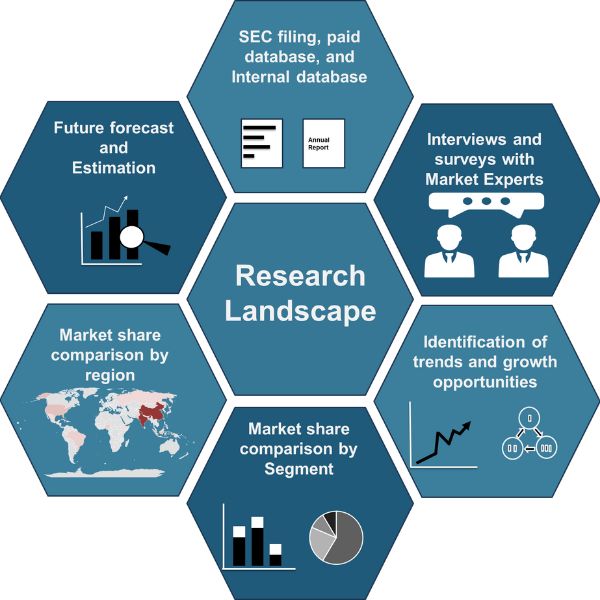
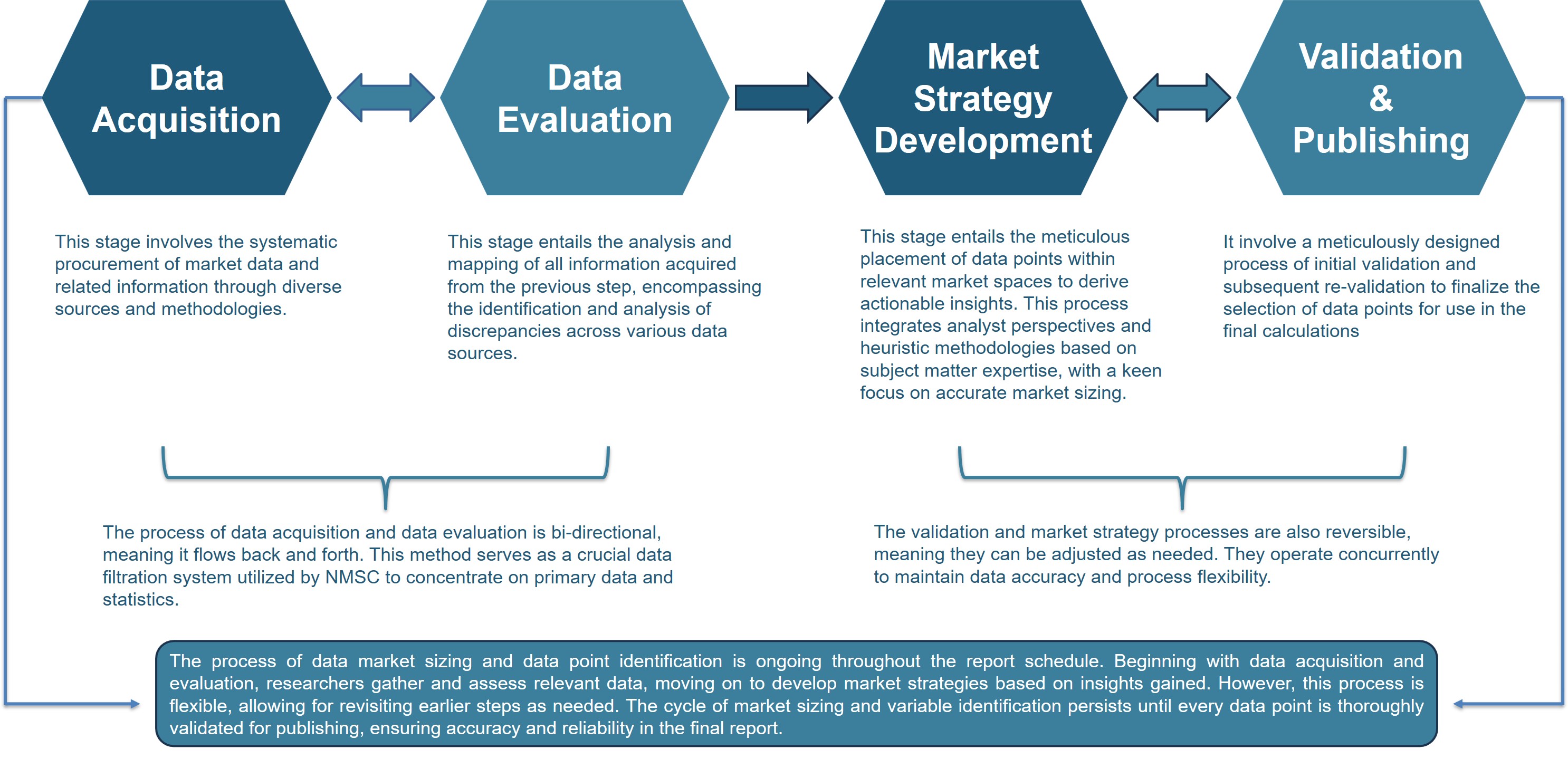




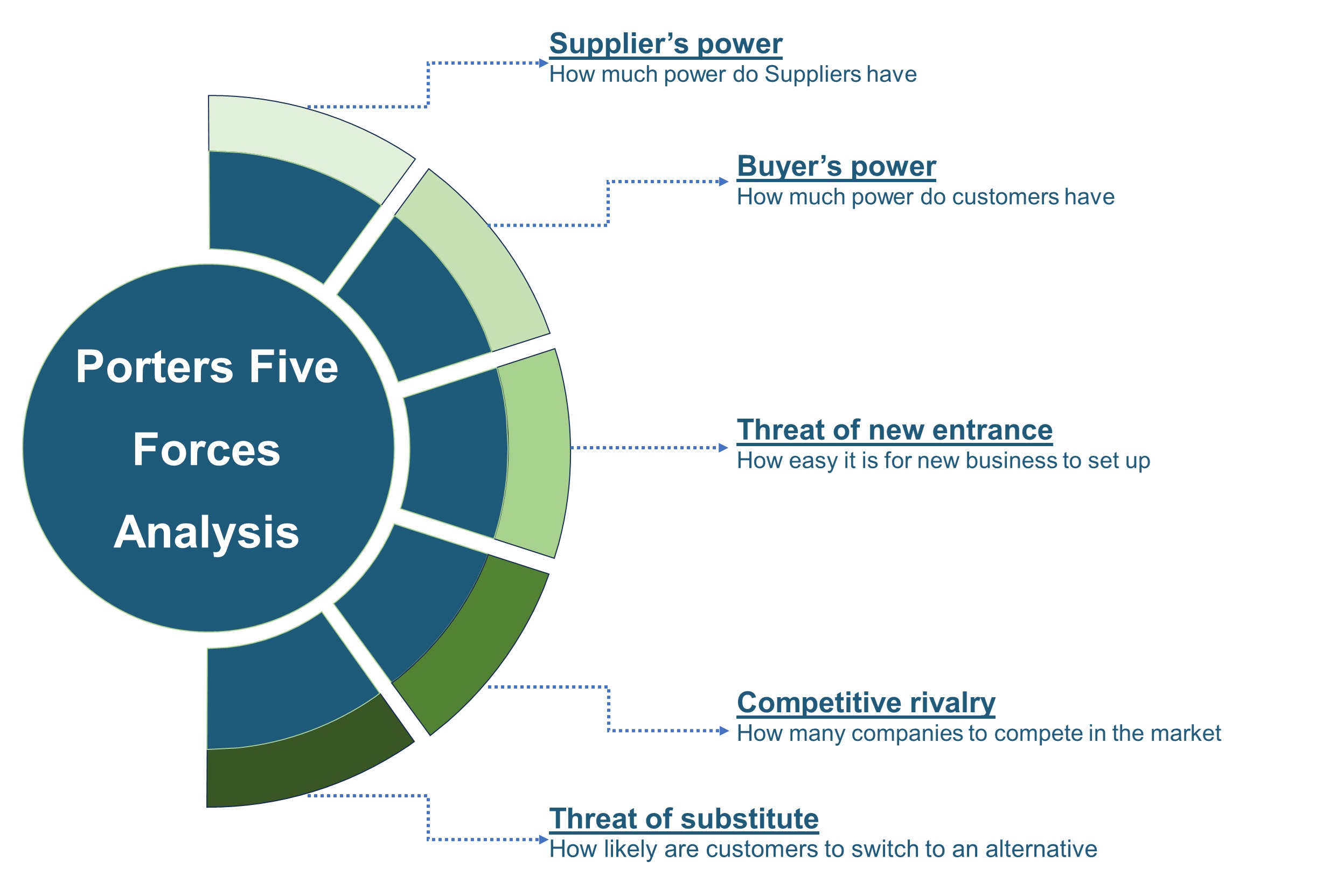







 Speak to Our Analyst
Speak to Our Analyst



